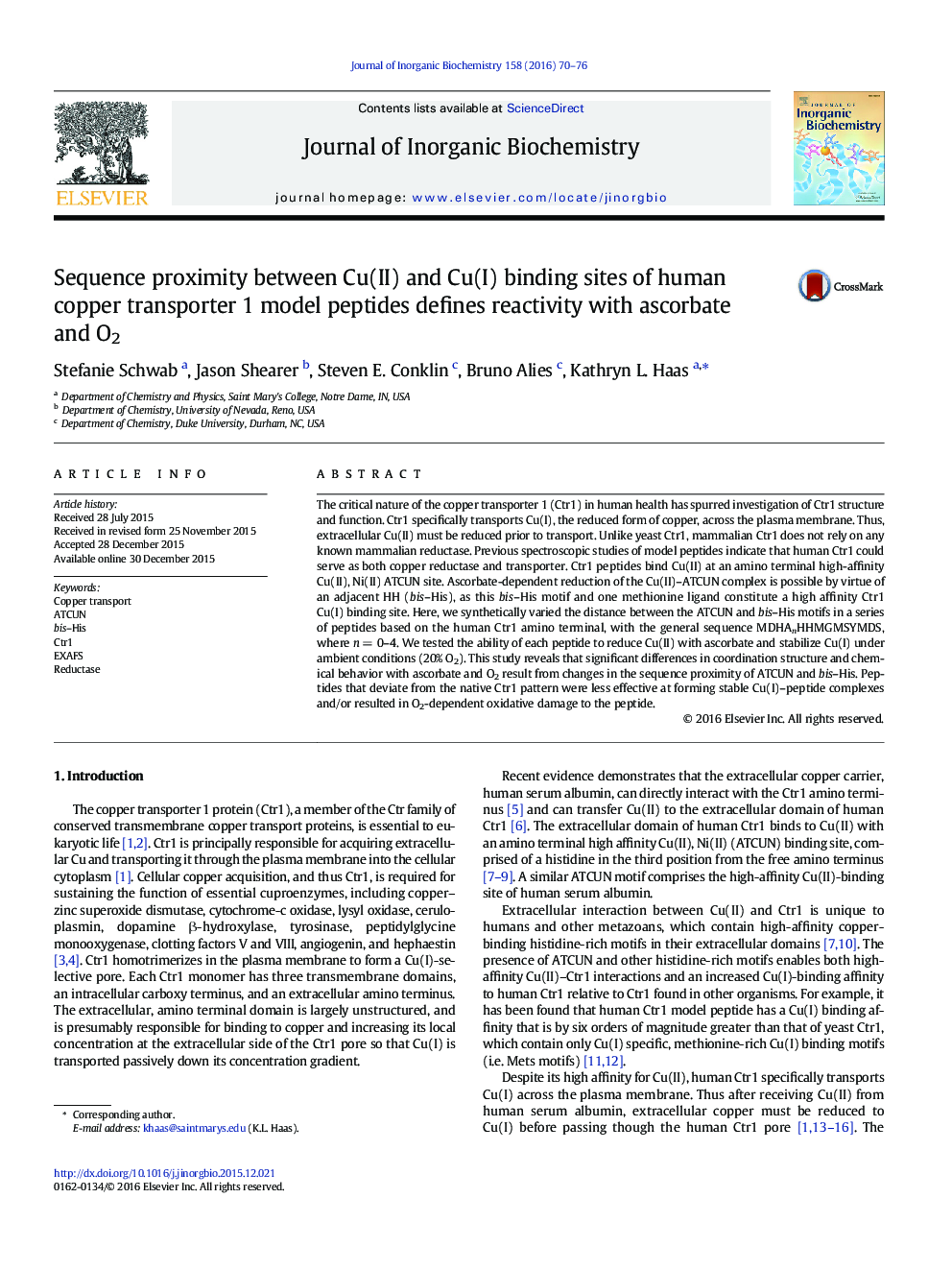| Article ID | Journal | Published Year | Pages | File Type |
|---|---|---|---|---|
| 1316839 | Journal of Inorganic Biochemistry | 2016 | 7 Pages |
•Peptides with Cu(II) and Cu(I) binding sites display interesting redox chemistry.•The human Cu transporter (Ctr1) has Cu(II) and Cu(I) binding sites at its N-terminus.•We examine how Ctr1 peptide sequence controls Cu reactivity with ascorbate and O2.•Variation in sequence results in a spectrum of Cu redox chemistry.•Ctr1 N-terminus facilitates Cu reduction and protects against oxidative peptide damage.
The critical nature of the copper transporter 1 (Ctr1) in human health has spurred investigation of Ctr1 structure and function. Ctr1 specifically transports Cu(I), the reduced form of copper, across the plasma membrane. Thus, extracellular Cu(II) must be reduced prior to transport. Unlike yeast Ctr1, mammalian Ctr1 does not rely on any known mammalian reductase. Previous spectroscopic studies of model peptides indicate that human Ctr1 could serve as both copper reductase and transporter. Ctr1 peptides bind Cu(II) at an amino terminal high-affinity Cu(II), Ni(II) ATCUN site. Ascorbate-dependent reduction of the Cu(II)–ATCUN complex is possible by virtue of an adjacent HH (bis–His), as this bis–His motif and one methionine ligand constitute a high affinity Ctr1 Cu(I) binding site. Here, we synthetically varied the distance between the ATCUN and bis–His motifs in a series of peptides based on the human Ctr1 amino terminal, with the general sequence MDHAnHHMGMSYMDS, where n = 0–4. We tested the ability of each peptide to reduce Cu(II) with ascorbate and stabilize Cu(I) under ambient conditions (20% O2). This study reveals that significant differences in coordination structure and chemical behavior with ascorbate and O2 result from changes in the sequence proximity of ATCUN and bis–His. Peptides that deviate from the native Ctr1 pattern were less effective at forming stable Cu(I)–peptide complexes and/or resulted in O2-dependent oxidative damage to the peptide.
Graphical abstractSynthetic changes in the proximity of the histidine Cu-binding motifs in human copper transporter 1 (Crt1) peptides culminate in varying coordination structure and chemical behavior with ascorbate and O2. Peptides deviating from the native Ctr1 histidine sequence were less effective at facilitating Cu reduction or generated O2-dependent oxidative peptide damage.Figure optionsDownload full-size imageDownload as PowerPoint slide
